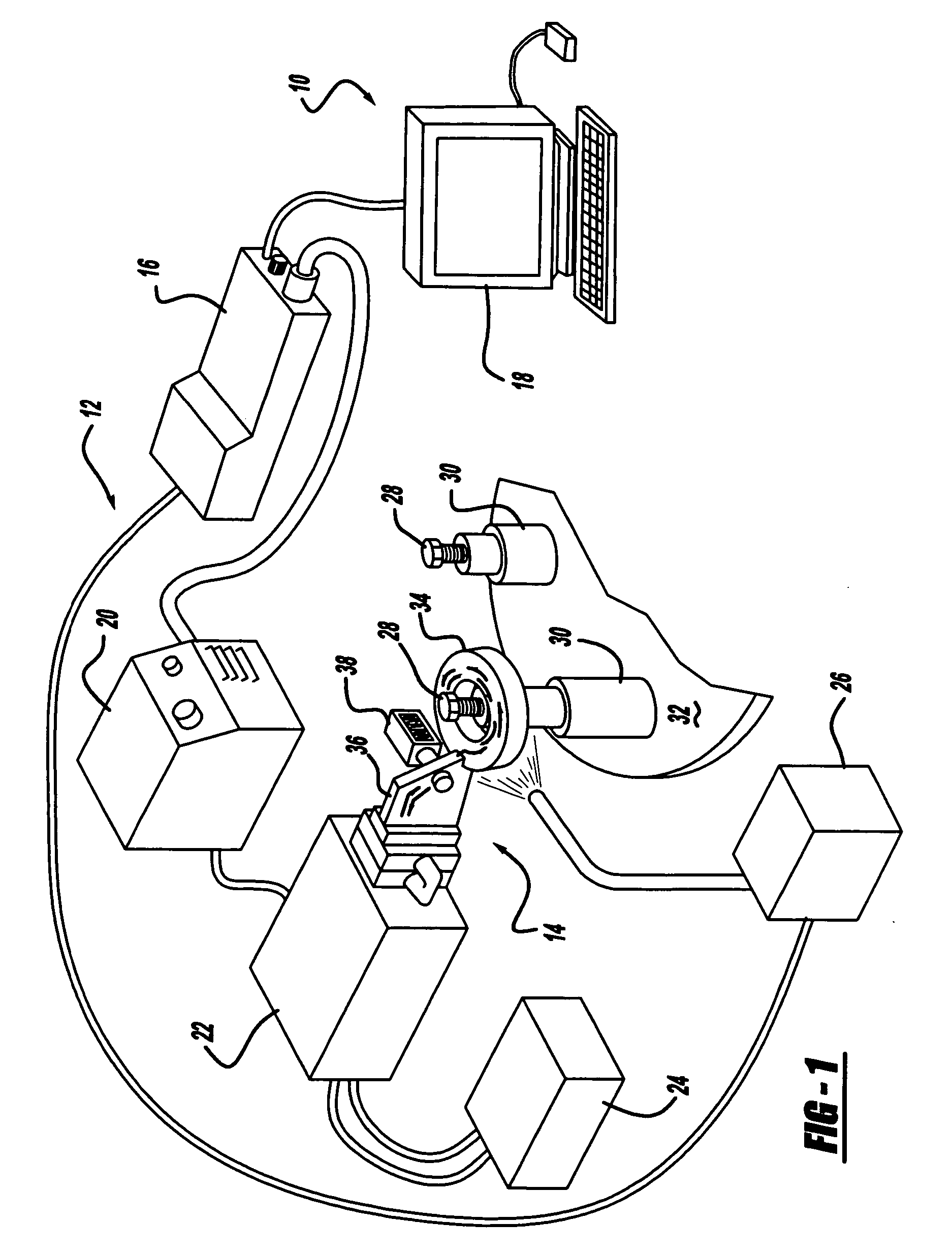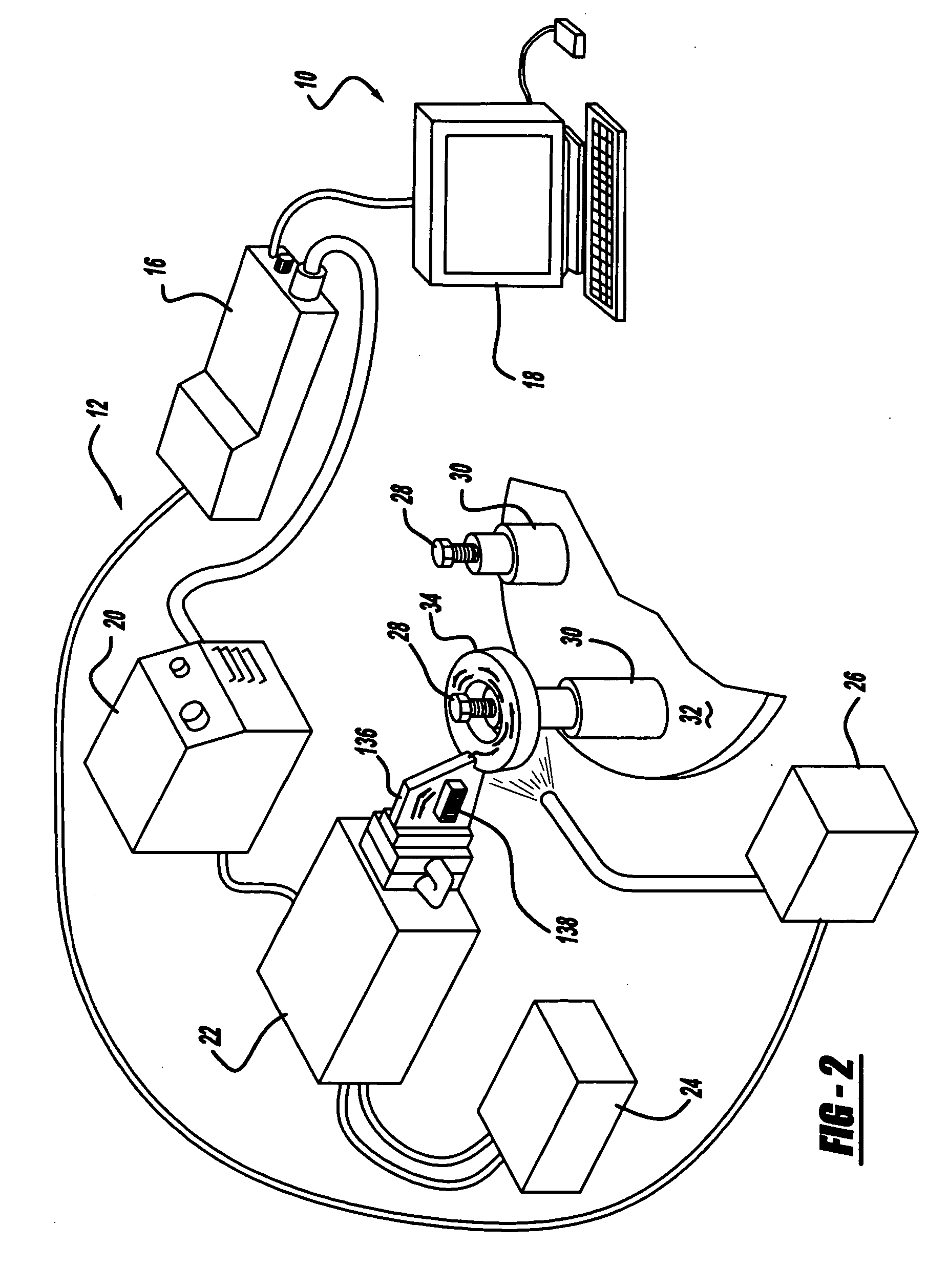Energization cycle counter for induction heating tool
a technology of induction heating and cycle counter, which is applied in the field of counting sensors, can solve the problems of stress cracks and coil damage, limited life cycle of joints, and damage to the coil, so as to reduce overall production costs, reduce inventory, and optimize production
- Summary
- Abstract
- Description
- Claims
- Application Information
AI Technical Summary
Benefits of technology
Problems solved by technology
Method used
Image
Examples
Embodiment Construction
[0022] With reference to FIGS. 1 and 2, a monitoring system 10 of the present invention is there shown and includes an induction heating coil assembly 12 and subassembly 14. The components of the induction heating coil assembly 12 include a Program Learning Center (PLC) 16 connecting a hard-wired Personal Computer (PC) 18 with a power supply 20. In an industrial setting, the PLC 16 is connected to a control cabinet (not shown) for automation and control of the induction process. The personal computer 18 is illustrated as part of the assembly 12, however, the personal computer 18 may be located off premises and connected to the monitoring system 10 via the Internet or other well-known communication devices.
[0023] A transformer 22 is connected to the power supply 20 and connects the induction heating coil subassembly 14 to the monitoring system 10. A cooling unit 24 for cooling the transformer 22 and coil subassembly 14 during the induction heating process is provided along with a qu...
PUM
 Login to View More
Login to View More Abstract
Description
Claims
Application Information
 Login to View More
Login to View More - R&D Engineer
- R&D Manager
- IP Professional
- Industry Leading Data Capabilities
- Powerful AI technology
- Patent DNA Extraction
Browse by: Latest US Patents, China's latest patents, Technical Efficacy Thesaurus, Application Domain, Technology Topic, Popular Technical Reports.
© 2024 PatSnap. All rights reserved.Legal|Privacy policy|Modern Slavery Act Transparency Statement|Sitemap|About US| Contact US: help@patsnap.com










